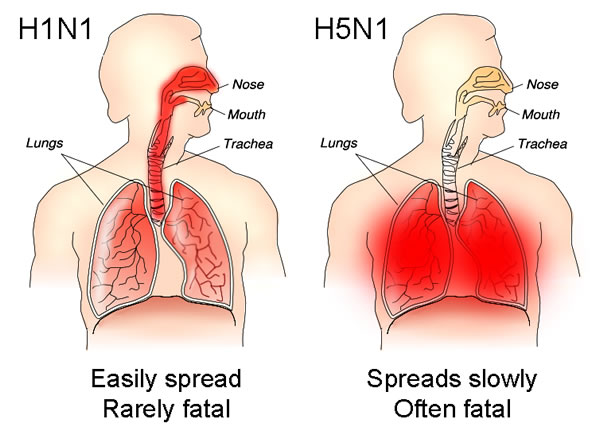‘This Needs To Be Treated With The Utmost Concern’ -Scientists Warn As Bird Flu Mutates To Infect People

A bird flu strain has evolved to better infect human cells in a worrying sign.
Scientists on the ground who made the discovery said the finding “needs to be treated with the utmost concern”. The bird flu strain known as H5N1 claimed the life of a schoolgirl in Cambodia last week.
The experts also said that there were “some indications” the virus had already “gone through” a human and picked up the new mutations before infecting the girl.
The 11-year-old girl, from Prey Veng province, became the first victim of H5N1 in 2023. Her father has also tested positive for the virus but has not developed symptoms.
Dr Erik Karlsson, who led the team at the Pasteur Institute of Cambodia that decoded the genetic sequence of the girl’s virus, warned that it differed from that taken from birds.
He told Sky News:
“There are some indications that this virus has gone through a human. Any time these viruses get into a new host they’ll have certain changes that allow them to replicate a little bit better or potentially bind to the cells in our respiratory tract a little bit better.”
READ ALSO: Millions Of Nigerians At Risk Of Neglected Tropical Diseases | Health Minister Raises Alarm
However, he added that the virus was yet to fully adapt to humans, saying it was fundamentally “still a bird virus”.
The strain in its current form is unlikely to cause a major outbreak. Widespread transmission would require a mutation that allows it to bind to a receptor found on cells in the nose.
Genetic testing revealed that the girl had caught the 2.3.2.1c strain of H5N1, which is endemic to wild birds and poultry in Cambodia.
This differs from the 2.3.4.4b type that has spread rapidly around the world and infected many birds and mammals, but Dr Karlsson said this was no reason to downplay the threat. He added:
“This was zoonotic spillover [of a virus infecting a new species] and needs to be treated with the utmost concern.”
Calling on the world to keep monitoring the virus, he said:
“Something may be happening here in Cambodia and something may be happening on the other side of the world in South America, but we don’t really know what could cause the problem tomorrow.”
H5N1 has a human mortality rate of around 50 percent. There have only been around 870 cases among people ever, globally.
The 2.3.4.4b strain has devastated the world’s bird population over the past year.


